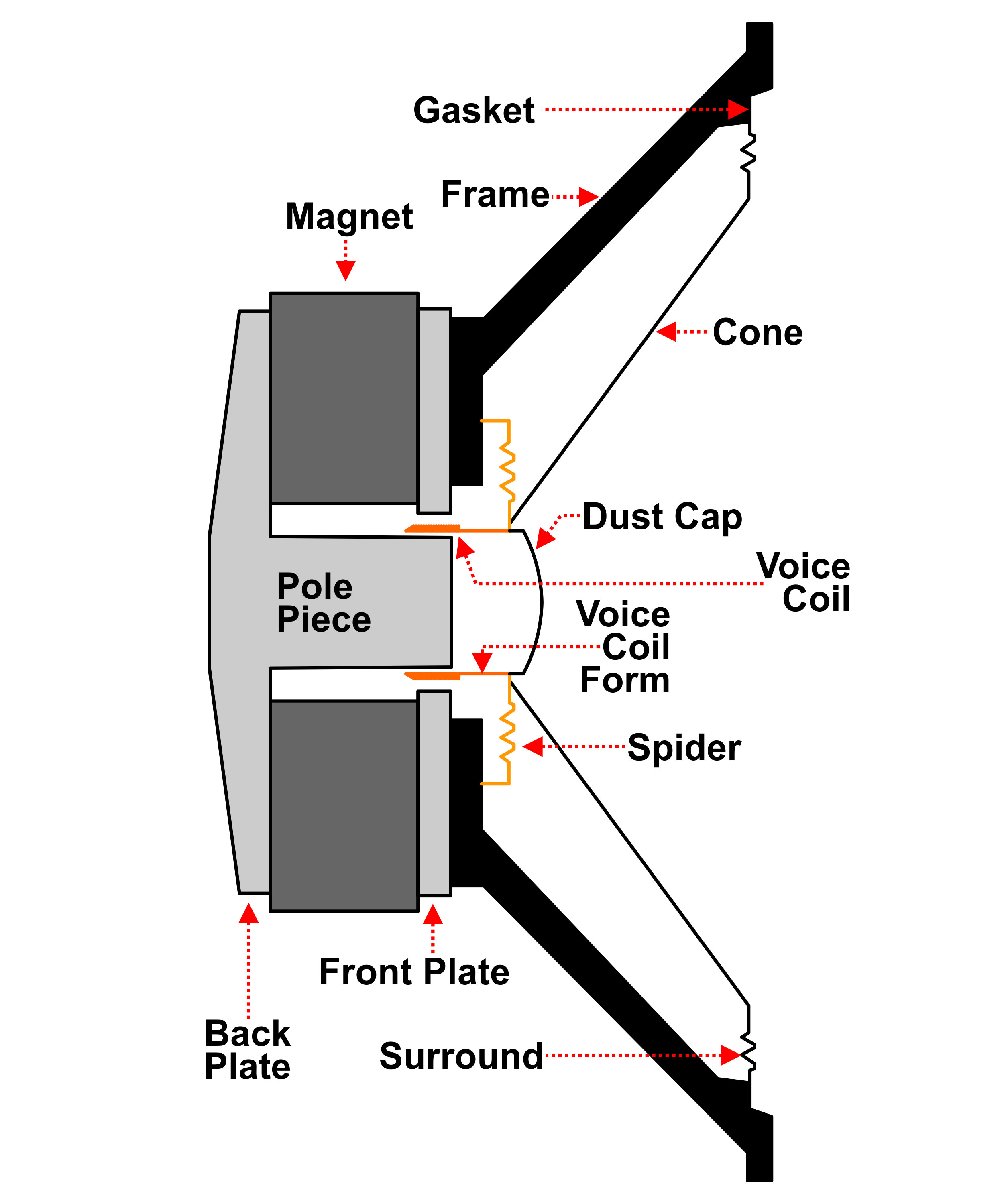WOOFERS, TWEETERS & CROSSOVERS
TAKING A CLOSER LOOK AT THE DIAGRAM OF SPEAKER PARTS

Let’s take a closer look at a diagram of speaker parts, bearing in mind that the conventional two-way bass reflex cabinet with a woofer and a compression driver— used here as an example— is just one among countless permutations with names like: direct reflecting, acoustic suspension, folded horn, electrostatic, column, monitor… you get the idea. Starting with the horns that gave voice to the Victrolas of yesteryear, speakers— or loudspeakers— have mutated into spheres, cubes, pyramids, and enough trapezoidal solids and rhombi to make Euclid himself dizzy. They come in all sizes: small as a snail, big as a bus. There are also many names and classifications for speakers, such as drivers, woofers, and tweeters.
Some of this stuff is covered in other articles in this magazine (or in the glossary). Let’s begin by reviewing the diagram of speaker parts.
This is a good place to pause and consider the word “speaker.” It can be: (A) one who speaks, (B) one who delivers speeches, or (C) the presiding officer of a legislative body. None of those definitions have anything to do with this discussion. For our purposes, a speaker can be: (A) a device (sometimes called a loudspeaker or driver) that transforms an electrical signal into sound (see woofers and tweeters), or (B) an assembly consisting of one or more drivers arranged in an acoustical enclosure.
